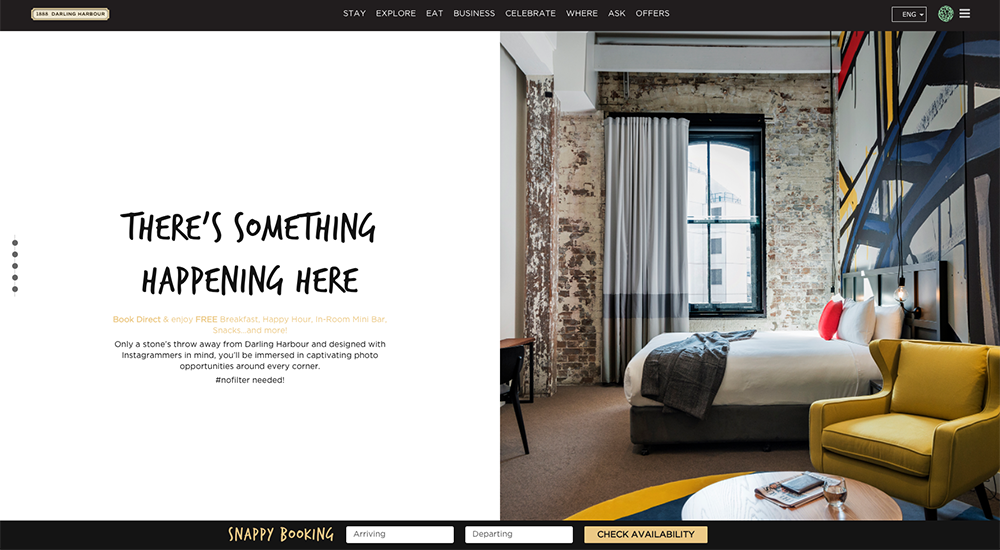How Your Hotel Can Win in a Mobile First World
The world has gone mobile and it shouldn’t come as any surprise. How many hours do you clock per day on your mobile device? Google has been vocal about the importance of mobile for years and it’s something that GCommerce has been preparing clients for since the first iPhone was released (that’s dating back to 2007 for quick reference).
First, a quick history of a few of Google’s mobile-ly motivated actions. In 2013, Google Adwords transitioned to Enhanced Campaigns, effectively taking away the ability to target a campaign to only one device type. Why? Because they want you to deliver the same experience to every consumer, no matter what device they are using. It also forced advertisers to start playing in the mobile space, where most saw lower conversion rates and poor revenue performance. In May 2015 Google confirmed that more searches are on mobile than desktop. Then, in the fall of 2016 Google announced they will be rolling out a new mobile-first index.
What does this all mean for hotels and how can your hotel succeed at (mobile) marketing? A successful marketing strategy these days means optimizing for all devices and understanding that consumer behavior is different depending on what device they are using at that time. We’re here to outline the steps for your hotel to achieve a successful marketing strategy for all devices.
STEP 1: THE FOUNDATION OF SUCCESS IS A WELL OPTIMIZED, RESPONSIVE WEBSITE
If you don’t have a mobile-friendly website it’s the first, most important step you should take in your hotel’s digital marketing strategy. Most KPIs funnel from traffic sent to your website. Take out your smartphone right now. Go to your hotel’s website. Can you easily navigate and find the information you need to complete the action you want visitors to take whether that’s an online reservation, click to call or important information such as location, directions, photos and more?
MAKE IT RESPONSIVE – In the early days of smartphones, many businesses turned to mobile websites to display unique, different versions of their web pages for mobile. New technology and Google’s directives are favoring the structure of responsive sites.
- Responsive websites give you the control to use the same page URL for any device but the design/presentation of the page is automatically adjusted depending on the device it’s being viewed upon. This means you don’t have to manage two sets of page content.
- Google is moving to mobile first indexing – if you have different/less information on your mobile page version then it could hurt you in organic rankings
- Take a look for yourself using a tool such as Screenfly to view your website across many different device types
MAKE IT FAST – page load time is extremely important for website performance and search engine rankings. Consumers have come to expect page content to load instantly, and when it doesn’t they bounce. Kissmetrics completed a study that found 47% of consumers expect a web page to load in 2 seconds or less and 40% of people abandon a website that takes more than 3 seconds to load. On top of that, Kissmetrics found that a 1-second delay in page response time could result in a 7% reduction in conversions. COMMIT THE BUDGET NECESSARY FOR IMPLEMENTING WEBSITE DEVELOPMENT IMPROVEMENTS FOR PAGE SPEED – you are certain to make your money back in no time.

OPTIMIZE IT – set up your site for SERP success with well-optimized pages that include:
- Optimized page titles, meta descriptions, and header tags
- Keyword focus integrated into your on-page copy, alt text and image names
- Voice focused keyword queries that answer questions and include semantic phrases for your top keywords
- Keyword rich URL strings
- Internal links to help visitors navigate easily through the site to find important content
MAKE IT EASY FOR YOUR VISITORS TO CONVERT –The easier you make it to navigate to what your consumers are looking for, the more likely the visitor is to convert. Don’t forget to look beyond your web pages – is your booking engine easy to use on mobile devices?

- Follow Google’s mobile-friendly best practices. Test your site here
- Present a clear path to conversion such as a prominent “Reserve Your Stay”, “Book Now” or phone number with click-to-call functionality
- Display easy to navigate menu options that present the most important information that visitors need
- Audit your booking engine path to book to ensure there are no excessive steps or information required to book

STEP 2: MAKE SURE YOUR HOTEL IS VISIBLE WITH LOCAL SEARCH OPTIMIZATION
46% of all searches on Google are local and in 2015 Google confirmed that mobile search surpassed desktop. Ensuring your hotel is optimized for local is more important than ever. Here’s a breakdown on how to make sure your hotel is visible in local searches:
Make sure you have consistent business information across all major directories, local listings
Optimize local listings including Google My Business, Bing Places
Partner with local businesses/community to gain exposure as well as link opportunities
On-page keyword optimization focusing on local, geographically focused terms
Encourage guests to post reviews through post-stay emails and reminders on property
STEP 3: DRIVE QUALIFIED TRAFFIC THROUGH A MIX OF MEDIA CAMPAIGNS ON MOBILE
Set up and optimize media campaigns for mobile devices driving exposure and generated qualified traffic to your mobile friendly website. Channels include:
PAID SEARCH
Use mobile bid adjustments to ensure visibility and conversions at the most efficient CPC
Enable location extensions to be eligible to show in Google Map/Local ads when people are searching for “hotels near” terms
Enable call extensions to allow your customers to click to call and drive phone call conversions
FACEBOOK: We see higher CTR on mobile than desktop and many of our clients are seeing a vast majority of their conversions coming from mobile devices.
Facebook’s Q1 2017 report showed that more advertisers are jumping on this trend; mobile ads made up 85% of Facebook’s q1 revenue.
In fact- many agencies are preaching “mobile first” even when it comes to FB ads (i.e. shorter copy, make sure images look good on a small screen, etc.).
EMAIL: a good mobile experience is also crucial to email marketing efforts:
Mobile represents roughly 54% of all email opens (according to litmus).
STEP 4: UNDERSTAND PERFORMANCE THROUGH KPIS AND CONVERSION TRACKING – are you tracking all points of conversion? Across all channels and all devices?
It’s important to understand that conversions on mobile devices may differ from desktop or tablet. Mobile phones are used intensively for research while desktop and tablet are still the main devices used to book online for hotels. Conversion types you should be using to measure mobile success include:
Phone calls
Look-to-book
Online reservations
Text to book
A major issue for many hotels is the inability to attribute phone call revenue to specific media campaigns or channels. There are a few solutions to track phone calls, from basic reporting that allows you to track the number of phone calls with duration and area code to solutions that can attribute booked revenue to specific campaigns. Some of our favorite solutions to help you track phone call conversions for hotels include:
Navis – an advanced phone call tracking solution that integrates with your reservation system to not only track revenue back to specific campaigns but improves your call conversion rate and deliver exceptional guest service.
Pros – advanced reporting including revenue booked over the phone and online attributed by campaign and by channel, improves guest experience drives higher phone call conversion rates, allows reservation agents to have specific notes on past guests and previous calls tied to same phone number
Cons – more expensive to set up, requires full integration into your operations reservation process and system
Phonalytics – provides a secure, easy-to-use Web-based control panel that shows all call attributes by customer name or ID, staff member, department, location, call time, call status and call duration
Pros – tracks phone calls and stats across multiple channels
Cons – doesn’t automatically track direct revenue from call bookings by channel
Google Adwords Call Tracking – the easiest and least expensive (free through your Google Adwords account) option, Google Adword’s call tracking allows you to track calls generated directly from your ads and calls generated after someone lands on your website and then calls you from the number displayed. This call tracking is easily set up through GTM and tracks by using dynamic phone numbers associated with each paid search campaign and displayed to the consumer on your paid search ad and on your website.
Pros – free, tracks calls – including duration, area code and if the call was answered or missed
Cons – can’t attributed direct revenue bookings, doesn’t record phone calls for reservation training or insight
CONCLUSION
What it all boils down to is that you need to optimize your online presence for an all-device world, taking into deep consideration the device types that are sending the most traffic to your website. Mobile, tablet and desktop traffic all play a role in the online lives of consumers and they expect a high standard of performance no matter what device they use. Optimize your hotel’s website for mobile but remember that all device types play a role in the online success of your business.











